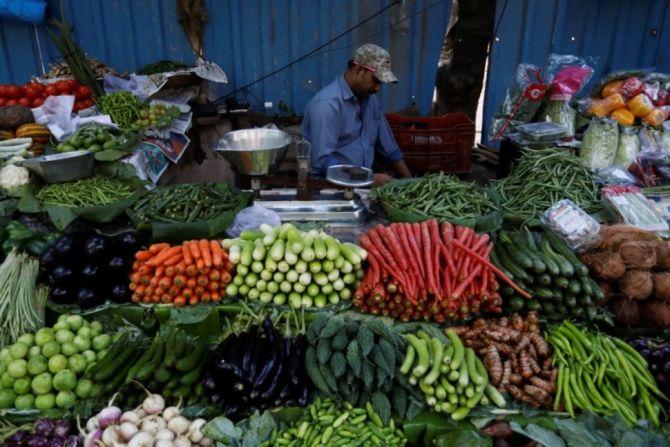Wall Street brokerage Bank of America Securities has pencilled in lower than the consensus retail inflation for the current fiscal year at 5 per cent, but higher than the previous forecast of 4.7 per cent.

Stating that the June print will be critical for the future trajectory -- after the extremely high 6.3 per cent print in May, the brokerage in a report on Friday revised upwards its forecast by 30 bps to an yearly average of 5 per cent for the year to March 2022.
"Though the June print will be critical for future trajectory, beyond near-term, we find some comfort from our analysis of four key factors that are likely to influence CPI inflation the most.
"Nevertheless, there are pockets of risks, especially around perishables inflation and higher global oil prices," its house economists warned.
The June CPI data will be released on July 12 and the agency expects the reading to hover around 5.5 per cent, sharply down from the unexpectedly high 6.3 per cent in May, while the market is expecting another 6 per cent plus print.
Rising WPI, which sniffed at a record 12.95 per cent in May and the CPI at 6.3 per cent for the month, above the RBI's tolerance level has fuelled talks of a potentially sustained uptrend in inflation and an earlier-than-expected withdrawal of the current accommodative monetary policy settings by the monetary authority, even as the country is just recovering from the second shock of the pandemic, the report said.
"We believe there is a strong possibility of a sequential decline in retail prices, as market-based price data collection is expected to improve, after falling notably in May due to localized lockdowns," it added.
Beyond the June print which is very critical for the future trajectory, a simple simulation exercise shows that the path for CPI inflation could be quite volatile and subject to a large range of possibilities, the BofA report observed.
Taking into account some of the emerging upside risks, "we revise up our inflation trajectory slightly and now see it averaging 5 per cent in FY22, up from 4.7 per cent previously", BofA Securities India house economists led by Aastha Gudwani said.
Their optimism comes with the belief of limited pass through from soaring wholesale prices to CPI inflation, amidst weak demand and technical differences.
These include, differences in weight, scope and data collection process for the two broad indices, blurring the comparison.
"Risks from higher oil prices are generally manageable in FY22, given the scope to adjust excise duty and other factors.
"But, risks are greater in FY23 based on our global oil price forecast, now revised up to $75 a barrel, from USD60 previously for 2022," they said.
They also expect food inflation to be contained given the expectation of a normal monsoons and record-high foodgrain buffer stock, but fruits and vegetables, edible oils and meat and fish pose upside risks.
Similarly, services inflation, which account for 23.4 per cent of CPI basket, should also to remain relatively flat alongside a lagged recovery, providing an anchor for the overall CPI print, they said.
"We continue to expect the spillovers to CPI inflation to be limited, despite elevated levels of WPI inflation, which jumped to a record 12.9 per cent in May on the back of a 35 per cent spike in fuel prices," the report said.
However, it noted that the higher global oil prices do pose upside risks to the inflation forecast, but expect this to be manageable in FY22.
"We currently see a small 20 bps upside to our FY22 average CPI inflation forecast as our global oil strategists have revised up their Brent forecast by just over 10 per cent, from $63 a barrel to $70 for FY22," the BofA economists opined.
But the government can offset some of this by lowering excise duty slightly by lowering the excise duty which was hiked by Rs 10 on petrol and Rs 13 on diesel in March 2020, they said adding that excise duty makes up for 30 per cent of the current retail price.
"In fact, we see a more significant inflation risk from higher oil prices in FY23, primarily due to sharper upward revision in oil price forecast to an average of $75 a barrel in 2022, up 25 per cent from $60, and this could push our FY23 average inflation forecast to 6 per cent from 5.5 per cent," the report said.
Photograph: Danish Siddiqui/Reuters











 © 2025
© 2025